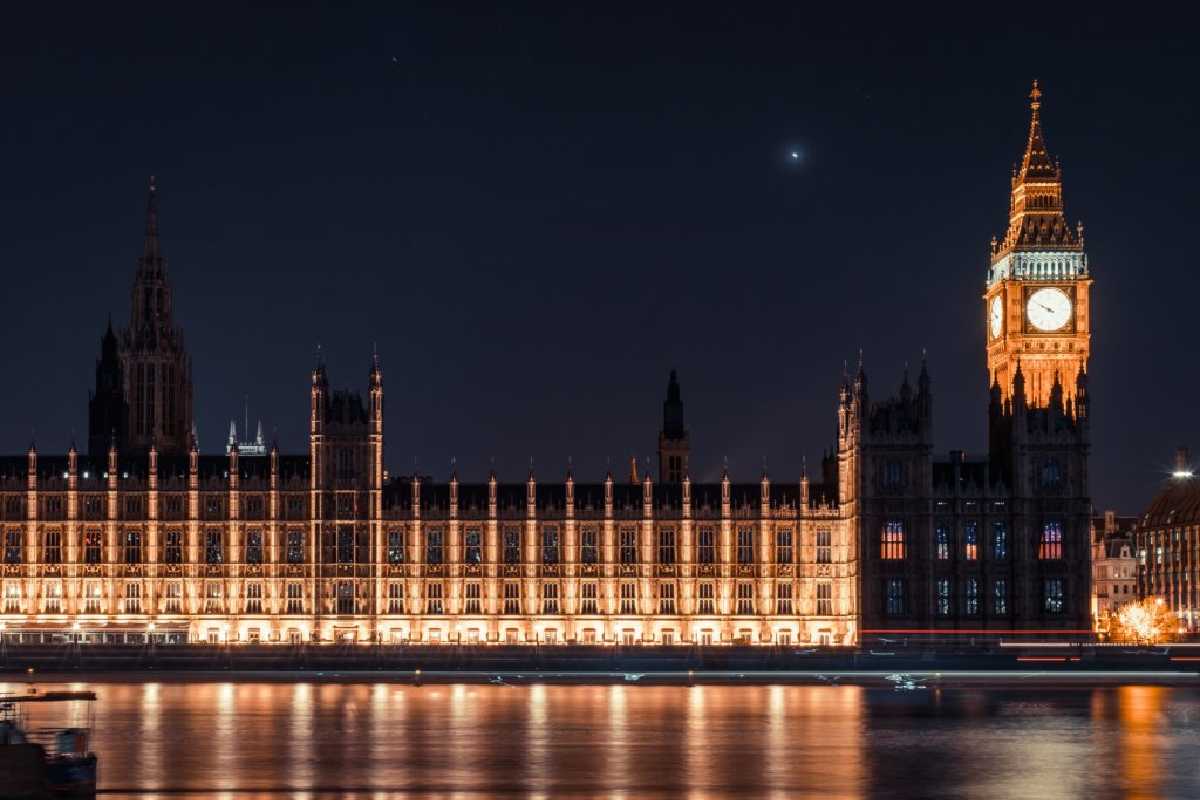Your guide to figuring out where to live in London as a graduate

This post is part of our ultimate guide to moving to London as a graduate. Finally nab the London job of your dreams? Now you’ve got to figure out where to live in London as a graduate.
No matter what all the TV shows tell you, London isn’t just made up of the Big Ben and the London Eye. The city is divided into five major areas: North, South, East, West and Central London. Beyond that, there are 33 different districts (called boroughs) in London, each with its own unique character.
When you start your search, you’ll likely get loads of conflicting advice as to which is the best area to live in. It’s important to bear in mind that Londoners are usually very protective of their area/borough. A South Londoner will inevitably say living there is better than living up North, for example.
No matter how much you’ve been dying to live in Camden or Peckham, we’d suggest you try finding something fairly easy to get to from your place of work. Extrapolating from your office will give you a better idea as to what your commute will be like from day to day. The best kinds of commute involve the least amount of changes possible. (You’ll thank us later.)
Variables to consider

How close your chosen property will be to an Underground station/Rail station or bus stop
Take it from me – I lived in a house that was only accessible by a 20 minute walk from the nearest bus or Tube station and it was hell during rainy days. Ideally, you should have multiple public transport options surrounding your chosen property, whether it be bus, tram, Tube, Overground or Santander cycles. After all part of moving to London is feeling like you’re connected to the city, but if you can’t get to Central London in less than 40 minutes, do you really live in London?

When evaluating a property’s proximity to public transport, consider not just the distance to the nearest station but also the frequency and reliability of services. Check the transport authority’s schedules to see how often buses or trains run during peak and off-peak hours. Additionally, explore any planned developments in the area that may enhance public transport accessibility in the near future, as this can significantly affect both your commuting experience and the property’s value over time. Investing in a home near transport links is advantageous, but understanding the full context of connectivity will ensure you make a more informed decision.
Proximity to nearby facilities such as supermarkets, gyms, restaurants and pubs
As a graduate, you’ll likely be living a pretty active social and work life. The more convenience in your area, the better. Look out for off-licences, 24-hour supermarkets, public parks and other landmarks to understand what your life in the area might be like. You’d be surprised at how much your surrounding area affects your ability to treat your new house like a home. I mean, what’s a new place to live without figuring where your nearest local pub is for a post-work pint?
Safety and reputation of the area
This is slightly more difficult to gauge through a Google search. This is probably something you should ask any fellow friends who’ve moved to London before. However, there are plenty of areas previously considered to be unsafe that are currently up and coming. It’s best to keep a good balance between being vigilant and having an open mind.
Zones

To make things even more complicated, London is divvied up into areas called Zones. Diving into the economic divisions between Zones will keep us here in this section forever, so briefly: Zone 1 is the most central zone but will generally have the highest rent prices, and as you go further down the list you’ll have lower rent prices but you’ll likely have a longer commute.
There’s one catch though. The further out you live (let’s say Zones 4 onwards), not only will your commute be longer, but it’ll likely be more expensive. We’ll tackle this further in the Budgeting section below.
(Top tip: the travel price differences only apply to Tube/Rail services. Zones have been abolished on London buses since 2004! This, plus the introduction of the new Hopper ticket which allows you two bus rides for ВЈ1.50 might save you a ton on your commute.)
Suggested Areas
Phew, we made it! Now that we’ve covered the bigger picture, let’s dive into some great areas you could consider that are up-and-coming and affordable. Don’t say we don’t take care of you now, y’hear.
East London
East London is usually known for being the ‘hipster’ end of London. Expect plenty of rooftop bars, cyclists, and men with immaculately groomed beards. However, areas of East London are less bohemian (code for affordable) than you think – the more central bits of East London have significantly shot up in price due to their proximity to tech companies like Google.
Our suggested areas below still have them East London ~vibes~ you’re looking for, but are a darn sight more affordable.
What you’ll usually think when you think ‘East London’: Shoreditch or Bethnal Green
Why not try: Haggerston, Dalston or Stoke Newington
Shoreditch and Hoxton
Once a bustling hub for London’s budget clothing trade, this former industrial zone in East London is now home to the trendy districts of Shoreditch and Hoxton. These neighborhoods have transformed into hotspots for fashionable locals, offering a vibrant mix of clubs, bars, restaurants, and shops at every turn. While green spaces are scarce, Shoreditch Park is a popular destination for sun-seekers when the weather is fine.
Shoreditch and Hoxton are unique areas with a diverse community, blending young creatives and city professionals alongside local families and celebrities. The housing primarily consists of older council estates and terraced homes, though modern developments can be found throughout. Moving further east from Liverpool Street station typically brings more affordable prices. For a more budget-friendly option, consider the increasingly popular houseboats along the local Regents Canal, a choice favored by many young Londoners.
Bethnal Green
Bethnal Green is next on my list of top places to live in London. Located in the heart of east London, this vibrant neighborhood boasts a mix of attractions, from the Young V&A Museum to the serene Bethnal Green Gardens.
The area is known for its blend of culture and trendy East End dining experiences, with an abundance of restaurants and bars. Paradise Row’s railway arches are packed with stylish spots for eating and drinking.
Living in Bethnal Green comes with several advantages, including more affordable housing compared to other parts of London, easy access to the tube station, and close proximity to Victoria Park and Mile End Park.
However, there are a few downsides. While the area has its charm, it lacks some of the buzz and variety of nearby hotspots like Hackney and Shoreditch.
West London
West London isn’t just for the poshest of the posh. There are still some fantastic, scenic places to live accessible through the Central or District line, after all. West London is a little bit quieter, so if you’re looking for a little more tranquility and green space, this area will probably suit you best.
What you’ll usually think when you think ‘West London’: Notting Hill, Kensington and Chelsea
Why not try: Shepherd’s Bush, Richmond or Ealing
Notting Hill
Notting Hill is an essential inclusion in any guide to London’s best places to live. Known for its iconic, brightly painted houses and the bustling Portobello Road Market, this neighborhood exudes charm and character.
In addition to its aesthetic appeal, Notting Hill boasts quaint mews, trendy boutiques, restaurants, pubs, and bars, all of which attract residents and visitors alike. Its status as a famous film location is an added perk.
Living in Notting Hill comes with numerous benefits, such as its central location, colorful streets, excellent tube connections, and vibrant market scene. However, the downsides include high property prices and heavy foot traffic, particularly on weekends when the market is at its busiest.
Kensington
If you’re considering where to settle in London’s west, South Kensington is a great option to explore. When I first mentioned to friends back in California that I was relocating to London, nearly everyone responded with, “You’re going to live in South Ken, right?” It’s almost expected.
This is largely because South Kensington is a favorite among American expats (and French expats, thanks to the Lycée Français). It’s an ideal spot if you’re moving from the U.S. or France and prefer to be around fellow expats.
But there’s much more to South Kensington. The area is home to picturesque mews, world-renowned museums, excellent restaurants, and independent boutiques.
The benefits of living in South Kensington include its central location, charming streets, excellent transport links with multiple tube stations, and access to cultural landmarks.
However, the downsides are the high cost of housing and large tourist crowds during the warmer months.
Chelsea
Chelsea is another top choice for living in London. This sophisticated neighborhood along the Thames is famous for its chic shopping, charming hidden gardens, and iconic pastel-colored houses.
King’s Road is a highlight, offering a variety of shops, restaurants, and markets. The nearby embankment boasts historic homes and stunning views of the river.
Advantages of living in Chelsea include its central location, picturesque streets, access to both tube and Overground stations, riverboat services, and abundant shopping options.
However, downsides include the steep housing costs, and some areas may feel a bit distant from the nearest tube or Overground stations for some residents.
North London
You’d probably still be able to get that tattoo your mother always warned you not to, but North London isn’t as hippity-hoppity as it used to be. The once notorious Camden has been gentrified to its limit, to the chagrin of rockers and punks alike. However, North London still boasts incredible music venue the Roundhouse, some truly stunning parks, and arguably, the best flat white coffees in the city.
What you’ll usually think when you think ‘North London’: Camden, Hampstead, and Belsize Park
Why not try: Kentish Town, Willesden Green or Finsbury Park
Camden
Situated just north of St Pancras, London’s only international station, Camden has long been recognized as one of North London’s most vibrant neighborhoods. At the center is Camden Lock, an eclectic area filled with canalside bars, cafés, market stalls, and creative spaces. The neighborhood is also home to some of London’s iconic live music venues, such as Electric Ballroom and the renowned Roundhouse. Nearby parks are plentiful, but Primrose Hill, offering stunning city views, may quickly become your favorite.
If you’re looking to live in the heart of Camden, close to Camden Town tube station, expect apartments to be the most common option. For more spacious homes, Primrose Hill’s exclusive area by the park offers a quieter option. While Camden’s bohemian flair comes with a higher price tag, more affordable properties can be found just a few minutes away in nearby areas like Chalk Farm, Kentish Town, and Barnsbury.
Hampstead
Hampstead holds a special place in my heart as the first neighborhood I called home in London, so it tops my list of best places to live in the city. This charming area in North London is truly a gem and remains one of my all-time favorites.
Renowned for its picturesque streets, stunning houses, cozy hidden pubs, and the vast beauty of Hampstead Heath, this neighborhood is undeniably one of the most beautiful places to live in London.
The pros of living in Hampstead include its scenic surroundings, abundance of green spaces, and a conveniently located tube station right in the heart of the area.
However, the downsides are a slightly longer commute to central London, expensive housing prices, and the absence of a large supermarket for grocery shopping (I often resorted to delivery).
Belsize Park
Belsize Park is where to live in London if you want a slightly more affordable area than Hampstead and you enjoy pretty side streets.
Sandwiched between Hampstead and Primrose Hill, this part of the UK capital is home to a high street with everything from independent restaurants to a branch of London’s beloved Daunt Books.
Belsize Lane also has a cluster of colorful shops and cafes, and there are great mews around it.
Pros of living in Belsize Park include the tube station, beautiful houses, proximity to Hampstead village, Hampsted Heath, and Primrose Hill, and slightly less expensive housing prices than Hampstead (this last point is true of nearby South End Green, too).
Cons of living in Belsize Park include the fact that housing prices are still high and you have a slightly longer commute into the heart of the city than you would if you lived more centrally.
South London
Folks, we have an important public service announcement to make.
Dear young professional. Not all roads lead to Clapham. Once the hub of young professionals, Clapham, Balham and to a certain extent, nearby Tooting are now more geared towards young families. Yup, that means houses are way more expensive.
South west London is becoming more and more pricey as time goes by. However, underrated areas lie in the east. Greenwich, the Isle of Dogs and Peckham have affordable housing and are likely to be more bang for your buck.
What you’ll usually think when you think ‘South London’: Clapham, Balham or Brixton
Why not try: Greenwich, New Cross or Peckham
Clapham
Clapham is a diverse and vibrant area in London, known for its blend of bustling social hubs and serene residential spaces. When Londoners mention Clapham, they may be referring to any number of neighborhoods that surround the expansive Clapham Common park. This can often cause confusion for newcomers. Clapham High Street, with its lively bars and restaurants, attracts a youthful crowd, while nearby Clapham Old Town offers a more relaxed atmosphere, featuring boutiques, cafés, and delis frequented by local families and professionals. On sunny days, Clapham Common becomes the heart of activity, drawing visitors from all over the city.
The area is highly desirable, and this is reflected in the local property market. Housing options range from traditional terrace homes and modern new-builds to council estates, offering a variety of price points. For those seeking more affordable options, neighboring areas like Tooting and Balham, further along the Northern Line, provide slightly lower prices while still maintaining easy access to central London, making them ideal for expats looking for a well-connected base.
Balham and Tooting
Next on the list of great places to live in London are Balham and Tooting. Located south of Clapham, these areas are known for their residential charm, lively high streets, vibrant nightlife, and spacious green parks.
One of the major highlights of these neighborhoods is access to large parks like Tooting Bec Common. These areas are especially popular with professionals and those in their 30s who are looking to purchase property in London while staying connected to the tube network—without having to pay the higher prices of Zone 1.
Living in Balham and Tooting offers several advantages, such as more affordable housing compared to central London, easy access to both train and tube stations, plenty of shops and restaurants, and abundant parkland.
The main downside, however, is that commuting to central London can take slightly longer.
Brixton
Brixton is unlike any other neighborhood in London. From the moment you exit the metro station, you’re immersed in the vibrant energy that pulses through its streets. The neighborhood’s sensory overload—aromas, sounds, and vivid colors—envelops you at every hour of the day. Once known for its turbulent past, Brixton now stands as a shining example of London’s multiculturalism. This lively corner of South London offers a wealth of great restaurants, bars, and social spaces, all united by a strong sense of community.
Brixton’s dynamic atmosphere makes it a hotspot for young professionals moving to London, driving rental and housing prices upward. However, property costs here are still more affordable compared to other trendy areas in the city. The housing landscape features a mix of terraced homes, former council estates, and new developments. Its excellent metro links make it a favorite for commuters working in central areas like Soho and King’s Cross.
Central London
What you’ll usually think when you think ‘Central London’: That it’s crazy expensive and you probably won’t be able to afford living there. Unfortunately, this is probably the case! Finding a double bedroom under ВЈ700 a month before bills is nigh on impossible. Zone 1 is probably a no-go zone if you’re a fresh face to London. Don’t despair though: it’s normal for young professionals to start off in Zones 2-4 and move closer into the center as their career progresses.
We hope that your house search is smooth, safe, and drama-less.
Your ultimate guide to house-hunting in the city of London
Connect with Debut on Facebook, Twitter, and LinkedIn for more careers insights.


